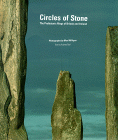<< Image Pages >> Warren Field - Ancient Village or Settlement in Scotland in Aberdeenshire
Submitted by Andy B on Wednesday, 28 September 2016 Page Views: 23677
Multi-periodSite Name: Warren Field Alternative Name: Crathes CastleCountry: Scotland County: Aberdeenshire Type: Ancient Village or Settlement
Nearest Town: Aberdeen Nearest Village: Banchory
Map Ref: NO73939670 Landranger Map Number: 38
Latitude: 57.060605N Longitude: 2.43147W
Condition:
| 5 | Perfect |
| 4 | Almost Perfect |
| 3 | Reasonable but with some damage |
| 2 | Ruined but still recognisable as an ancient site |
| 1 | Pretty much destroyed, possibly visible as crop marks |
| 0 | No data. |
| -1 | Completely destroyed |
| 5 | Superb |
| 4 | Good |
| 3 | Ordinary |
| 2 | Not Good |
| 1 | Awful |
| 0 | No data. |
| 5 | Can be driven to, probably with disabled access |
| 4 | Short walk on a footpath |
| 3 | Requiring a bit more of a walk |
| 2 | A long walk |
| 1 | In the middle of nowhere, a nightmare to find |
| 0 | No data. |
| 5 | co-ordinates taken by GPS or official recorded co-ordinates |
| 4 | co-ordinates scaled from a detailed map |
| 3 | co-ordinates scaled from a bad map |
| 2 | co-ordinates of the nearest village |
| 1 | co-ordinates of the nearest town |
| 0 | no data |
Internal Links:
External Links:
I have visited· I would like to visit
SumDoood would like to visit
Andy B has visited here

(See below for discussion of the Mesolithic pit alignment.)
The timber building excavated in 2004 by Murray Archaeological Services Ltd was 24m long and 9m wide externally, with fairly straight side walls and rounded ends. The interior, which was c.22.5 x 8m and divided by partitions into four distinct areas.
A large pit was situated on the long axis at each end of the building. Most of the timbers in the external walls had been charred, in many cases extending to and including the base of the post. In some instances the charring was up to 50-60mm thick, resulting in the survival of a charred outer casing of the timber around the rotted core.
Analysis of the 21 radiocarbon measurements obtained from the charred structural timbers and charcoal from post-holes provides estimates for the start of the use of the hall of 3820-3720 cal BC (95% probability; Boundary start;)and very probably 3810-3760 cal BC (68% probability) and the end of use of 3780-3690 cal BC (95% probability; end) and very probably 3780-3700 cal BC (68% probability). The span of use of the hall is estimated at 1-90 years (95% probability; and probably 1-50 years (68% probability).
Source, with a diagram at Chronologies.co.uk and see also the Canmore record.
Note: Mesolithic Deeside, Friday, Sept 30th talk by Caroline Wickham-Jones and even more on Sat October 1st at Crathes Castle. Sounds like a very interesting day. See the most recent comment on our page
You may be viewing yesterday's version of this page. To see the most up to date information please register for a free account.





Do not use the above information on other web sites or publications without permission of the contributor.
Click here to see more info for this site
Nearby sites
Key: Red: member's photo, Blue: 3rd party photo, Yellow: other image, Green: no photo - please go there and take one, Grey: site destroyed
Download sites to:
KML (Google Earth)
GPX (GPS waypoints)
CSV (Garmin/Navman)
CSV (Excel)
To unlock full downloads you need to sign up as a Contributory Member. Otherwise downloads are limited to 50 sites.
Turn off the page maps and other distractions
Nearby sites listing. In the following links * = Image available
623m SSE 164° Milton of Crathes* Class I Pictish Symbol Stone (NO741961)
1.0km SW 218° Balbridie Neolithic Timber Hall Ancient Village or Settlement (NO733959)
2.0km S 175° Barns Enclosure Ancient Village or Settlement (NO741947)
2.6km S 182° Cairnshee Enclosure Souterrain (Fogou, Earth House) (NO738941)
3.0km SSE 150° Cairnfauld* Stone Circle (NO754941)
3.0km S 178° Cairnshee Wood* Cairn (NO740937)
3.0km SSW 207° Tilquhillie Stone Circle (Remains)* Stone Circle (NO72529402)
3.1km SSW 213° Tilquhillie Standing Stone* Standing Stone (Menhir) (NO72239410)
4.1km ENE 76° Park House* Class I Pictish Symbol Stone (NO77979765)
4.4km S 186° East Mulloch Stone Circle (NO734923)
4.8km SSW 200° Esslie The Lesser* Stone Circle (NO72259215)
5.1km S 187° Westerton Hut Circle Ancient Village or Settlement (NO733916)
5.6km SSW 203° Esslie The Greater* Stone Circle (NO71729159)
5.6km ESE 107° Clune Wood* Cairn (NO7934695036)
5.7km W 264° Inchmarlo* Standing Stone (Menhir) (NO68249613)
5.7km SSW 195° Garrol Wood* Stone Circle (NO72409117)
5.8km ESE 107° Raes Of Clune* Stone Circle (NO7946894949)
6.4km SSW 197° Midtown Ancient Village or Settlement (NO720906)
6.4km SE 138° Cairn-mon-earn* Cairn (NO782919)
6.8km SSW 200° Midtown Ancient Village or Settlement (NO715903)
7.1km ESE 108° Elsick Mounth* Ancient Trackway (NO807945)
7.6km ESE 102° South Brachmont Artificial Mound (NO814950)
7.9km NNE 18° East Finnercy Cairn (NJ764042)
8.8km WSW 245° Bucharn* Round Cairn (NO65949300)
8.8km NNE 31° Cullerlie* Stone Circle (NJ7851104275)
View more nearby sites and additional images






 We would like to know more about this location. Please feel free to add a brief description and any relevant information in your own language.
We would like to know more about this location. Please feel free to add a brief description and any relevant information in your own language. Wir möchten mehr über diese Stätte erfahren. Bitte zögern Sie nicht, eine kurze Beschreibung und relevante Informationen in Deutsch hinzuzufügen.
Wir möchten mehr über diese Stätte erfahren. Bitte zögern Sie nicht, eine kurze Beschreibung und relevante Informationen in Deutsch hinzuzufügen. Nous aimerions en savoir encore un peu sur les lieux. S'il vous plaît n'hesitez pas à ajouter une courte description et tous les renseignements pertinents dans votre propre langue.
Nous aimerions en savoir encore un peu sur les lieux. S'il vous plaît n'hesitez pas à ajouter une courte description et tous les renseignements pertinents dans votre propre langue. Quisieramos informarnos un poco más de las lugares. No dude en añadir una breve descripción y otros datos relevantes en su propio idioma.
Quisieramos informarnos un poco más de las lugares. No dude en añadir una breve descripción y otros datos relevantes en su propio idioma.